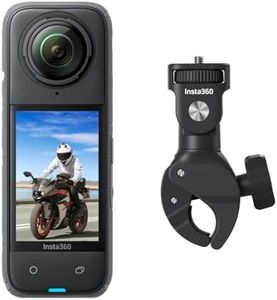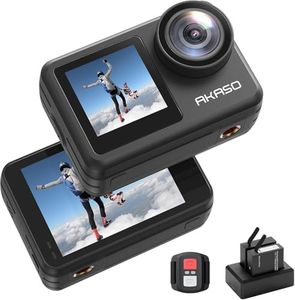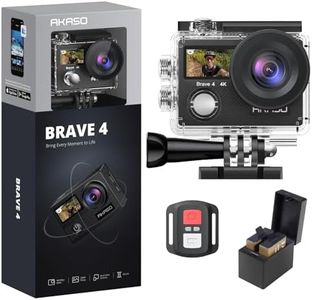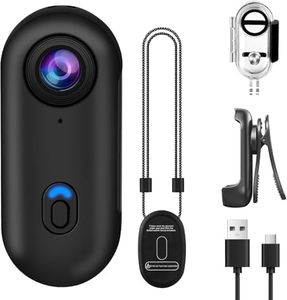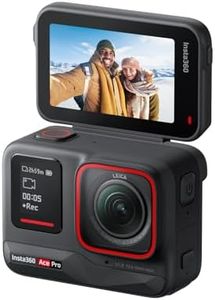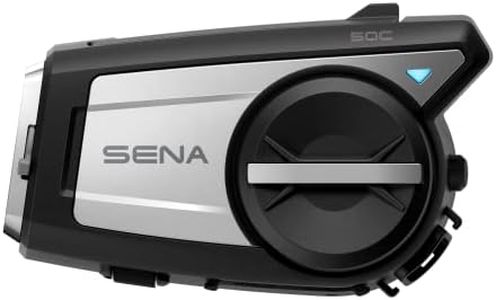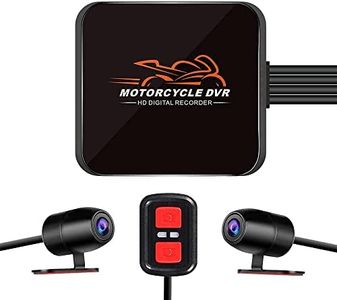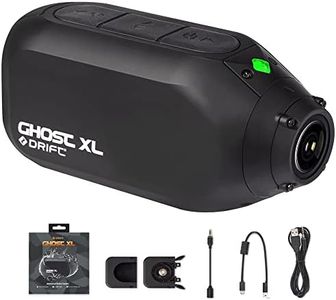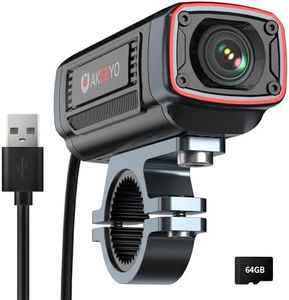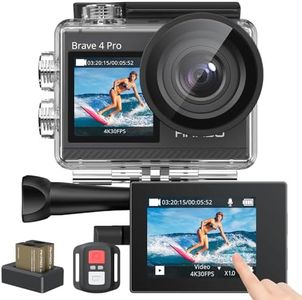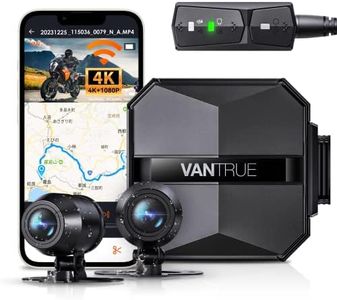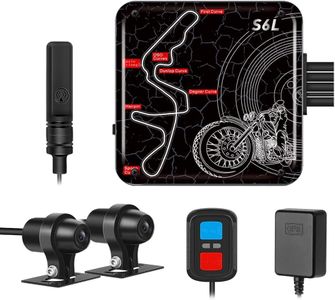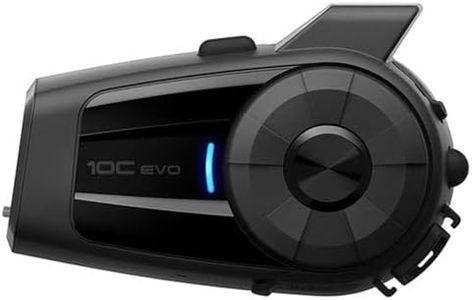We Use CookiesWe use cookies to enhance the security, performance,
functionality and for analytical and promotional activities. By continuing to browse this site you
are agreeing to our privacy policy
10 Best Motorcycle Camera
From leading brands and best sellers available on the web.Buying Guide for the Best Motorcycle Camera
Choosing a motorcycle camera requires a bit of thought about how and where you'll be riding, what moments you want to capture, and how you plan to use the footage. Whether you're hoping to document scenic rides, improve your safety, record incidents for insurance, or create content for sharing, understanding the key specifications can help you find a camera that fits your needs and enhances your riding experience.Video ResolutionVideo resolution tells you how sharp and detailed the footage from the camera will be. Common resolutions include 720p (HD), 1080p (Full HD), and 4K (Ultra HD), with higher numbers giving you crisper video. If you want footage mostly for sharing on social media or for basic evidence, Full HD is usually enough, but for those looking to create visually stunning trip videos or capture details like license plates, a 4K camera might be more suitable. If storage space and ease of editing are priorities, sometimes lower resolutions make files more manageable.
Field of View (FOV)Field of View refers to how wide an area the camera lens can capture. FOV is typically described in degrees, like 120°, 140°, or even 170°. A wider field of view will help grab more of the road and your surroundings, which can be helpful for evidence or scenic captures. However, a very wide field might distort the image (a fisheye effect), so if your focus is on clear and undistorted footage, a slightly narrower FOV might be better.
Mounting OptionsMounting options refer to how and where you attach the camera to your bike or helmet. Cameras may offer handlebar, helmet, or dash mounts. The right choice depends on the perspective you want and your comfort—helmet mounts provide a rider’s eye view, while bike mounts are fixed to the machine. Think about stability, ease of removal, and how intrusive the camera might be while riding.
Image StabilizationImage stabilization helps keep your footage smooth even when the bike is vibrating or hitting rough patches. Some cameras use digital stabilization to steady the image, which is essential for watching or sharing your ride later. If you do a lot of off-road or high-speed riding, look for cameras that specifically mention advanced stabilization.
Weather and Water ResistanceWeather and water resistance tell you how well the camera will hold up in rain, dust, or mud. Many cameras are rated with terms like ‘water-resistant’ or ‘waterproof’. If you ride in all weather or want to keep the camera on the bike full-time, pick models designed to handle tough conditions. Occasional riders or dry-weather users might not need the highest grade of protection.
Battery LifeBattery life is how long the camera can record on a single charge, often ranging from about an hour up to several hours. If you take long trips or want to ‘set and forget’ the camera, a longer battery life is helpful. Some cameras offer removable batteries or the option to use external power sources, which are good if you don’t want to worry about recharging often.
Loop Recording and StorageLoop recording means the camera will overwrite the oldest footage when the memory card is full, ensuring that you never miss new events because of full storage. This is especially important for dashcam-style use, where constant recording is key for evidence. Check if the camera supports adequate memory card sizes and if it easily manages files.
Night Vision or Low Light PerformanceNight vision or good low-light performance allows the camera to capture clear footage even after sunset or in poorly lit conditions. If you frequently ride at night or through tunnels, picking a camera with reliable low-light capability makes your recordings useful at all times, not just during the day.
Audio RecordingAudio recording captures sound along with your video, such as road noise, commentary, or important background sounds. Consider if you want to hear conversations or environmental sounds clearly; in that case, look for cameras with good microphones or options for external mics. Some riders prefer to turn off audio or use wind-noise reduction, especially at high speeds.
